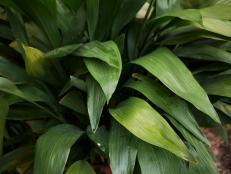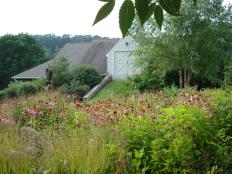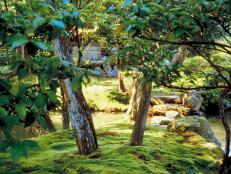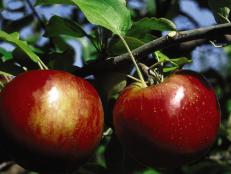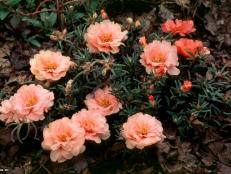Types of Ornamental Grasses
Trying to find ornamental grasses for the garden was a real challenge 25 years ago. Today gardeners use them liberally in the garden — for their low maintenance, ease of growth, long flowering time, few insects and diseases, and ready availability. Now there's a dramatic and sensational array of grasses for all sorts of landscape uses.
'Huron Blush'
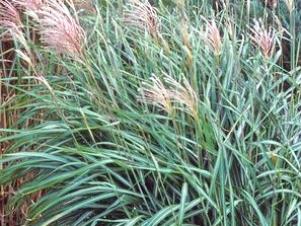
'Huron Sentinel'

Maiden grass cultivars. Not for the faint of heart because these are generally some of our tallest grasses, maiden grasses are among the easiest to grow. They thrive in full sun and average garden soil and are hardy in USDA Zones 4 to 9. Both Miscanthus sinensis 'Huron Blush' and 'Huron Sentinel' are late-summer flowering grasses.Up to six feet tall, 'Sentinel' sports arching green leaves and a narrow white midrib. The large bronze flowers temptingly turn into puffy fawn-colored seedheads the texture of chenille.
'Huron Blush' is only four to five tall. In late summer the flowers are an elegant cream tinged with a soft pink blush.
Miscanthus sinensis 'Little White Spider' is a good choice when space is a limitation. Instead of arching, this grass is more upright and compact. The silvery plumes appear midsummer for a long season of bloom.The finely textured blades turn a lovely bronze-red. Hardy to USDA Zone 5.

Panicum virgatum 'Northwind'. One of my favorites is a relative newcomer among the switch grasses. This is the most compact and upright of all the Panicums. The beautiful yellowish panicles appear in late summer and are held mostly in the center of the clump. This is an extremely fast-growing grass. Unlike many other switch grasses, it remains vertical through the winter; unless it's grown in significant shade or snow is heavy, 'Northwind' never looks like a blown-over haystack. Hardy in USDA Zones 5 to 8.
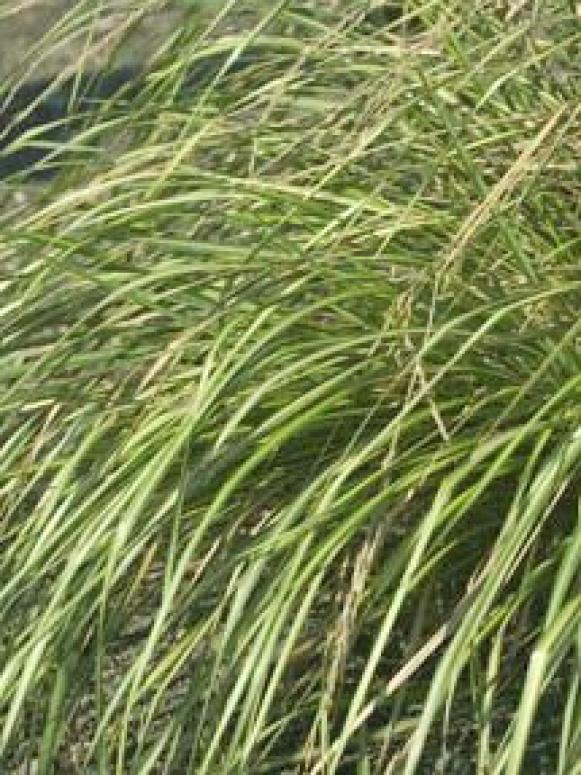
Calamagrostis x acutiflora 'Eldorado' is an elegant feather reed grass with unusual gold-variegated blades. Feathery plumes start in early summer and last into fall. At four to five feet tall, it is one of the best grasses for the mixed border or very large containers. Hardy in USDA Zones 5 to 8.
Pennisetum alopecuroides. 'Fox Trot' and 'Red Head' are the shining new stars when it comes to fountain grasses. Both are hardy in USDA Zones 5 to 9. At four to five feet tall, 'Fox Trot' has the distinction of being one of the tallest fountain grasses. The smoky, dark plumes appear in late summer, each measuring six to eight inches long, and are attractive for dried arrangements. When the plumes blow gracefully in the wind, it's easy to see how it got its name.
'Fox Trot'
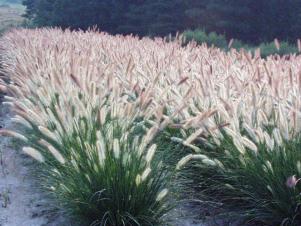
'Red Head'

'Red Head' blooms in mid-summer, its purple-reddish buds evolving into purple plumes with a reddish cast. The foliage turns yellow in fall. Only three to four feet tall, 'Red Head' looks great in late-season containers.
Grasses for Shade
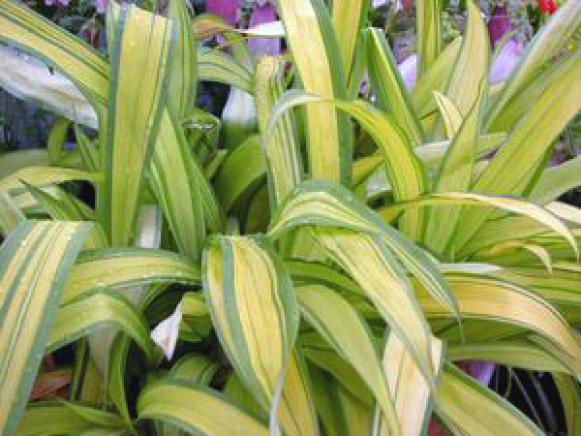
For those who love grasses but have only shade to offer, there are also new choices for you. The carexes are technically sedges, but the use is the same. They like partial to full shade and grow best when soils are evenly moist. They aren't drought tolerant like the sun-loving grasses.
- Carex siderosticha 'Banana Boat' could pass for a miniature hosta. The wide leaves are a lemony banana-yellow with narrow green stripes. This delightfully showy small plant is only six to 12 inches tall. It makes a great groundcover, shady front-of-the-border plant or a wonderful addition to a container. Hardy in USDA Zones 6 to 9.
- Carex appalachica, Appalachian sedge, is a remarkable new native grass for homeowners. This clump-forming sedge makes a great low-maintenance lawn substitute. Just cut this fine-textured, 12-inch grass once in spring. The weeping or drooping foliage curves and swirls as though jitterbugging on a windy day. The flowers are not showy. This cascading plant provides texture, color, and interest in difficult sites. It prefers dry to average soil in USDA Zones 3 to 8.
- Hakonechloa macra 'Aureola', Hakone grass. This hard-to-find and underused Japanese grass is a mass of arching, golden blades, 12 inches tall, assuming reddish tints in fall. It prefers high shade and moist soil. The grass is very slow-growing, so give it some time to mature because it's worth the wait. A mature plant looks like a golden-yellow cascading waterfall. Hardy in USDA Zones 4 to 8.
--Stephanie Cohen is a contributing editor to Fine Gardening and co-author of The Perennial Gardener's Design Primer (Storey, 2005).










